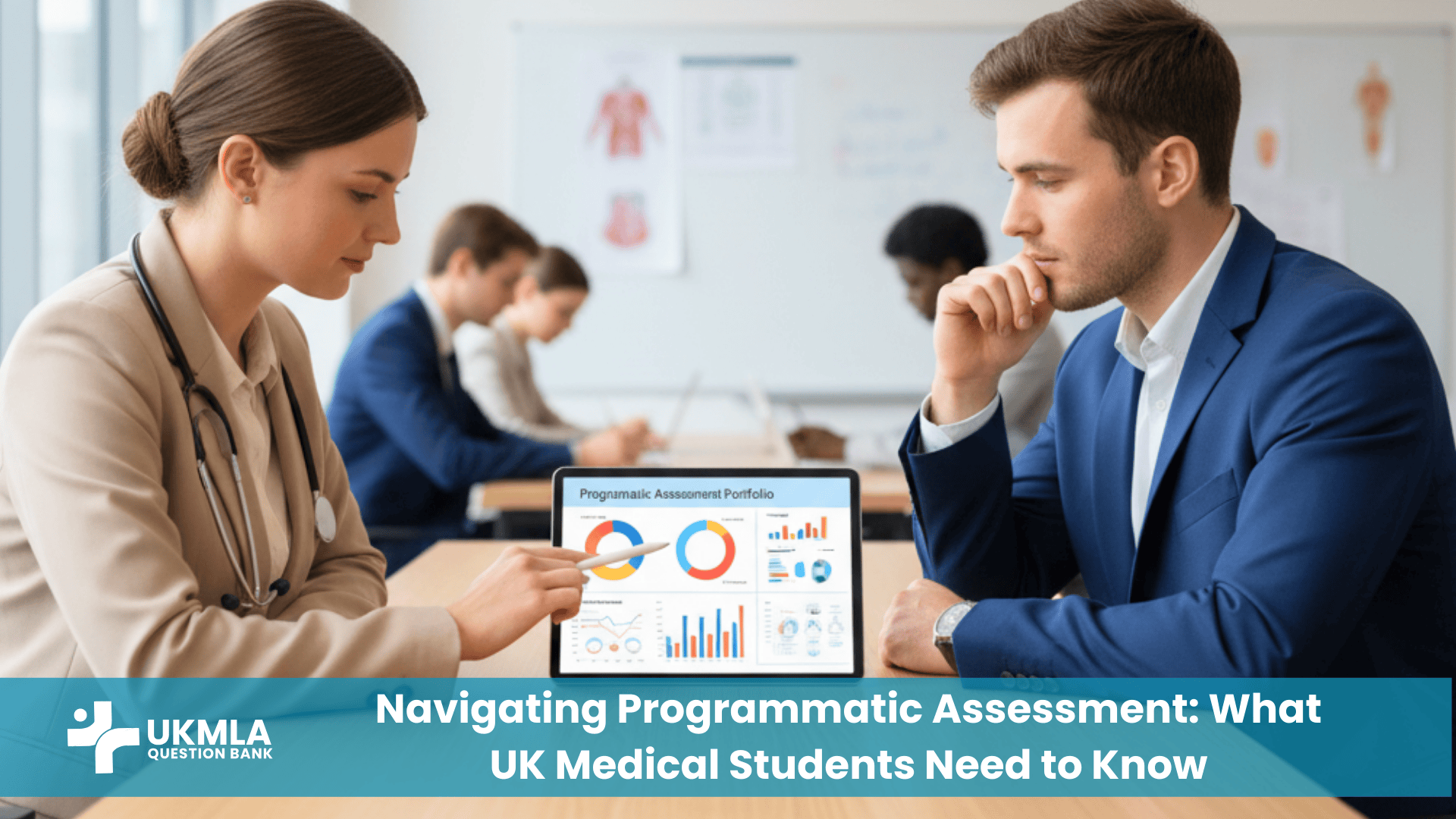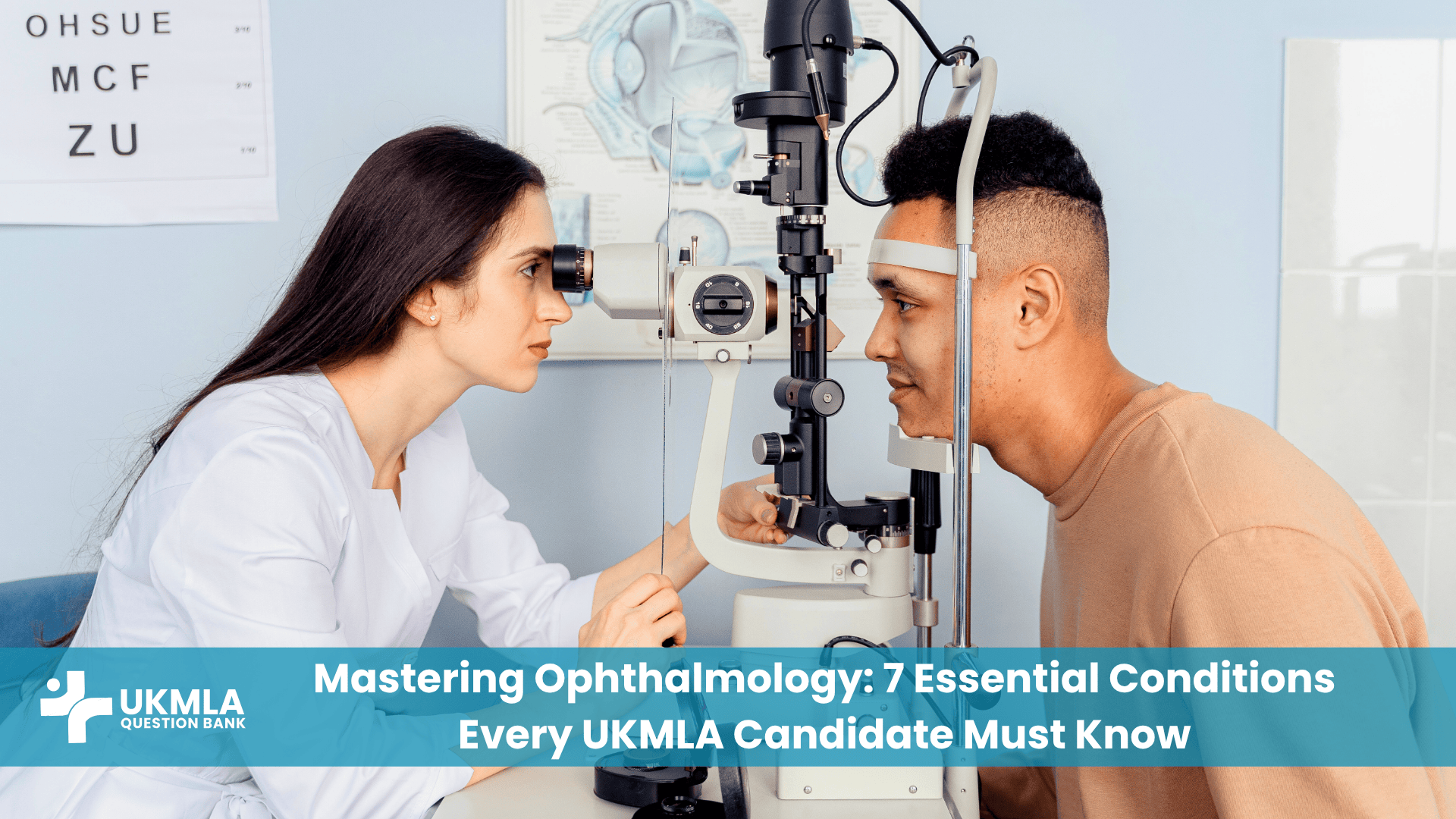Introduction
Understanding the programmatic assessment medical school students are now encountering is key to navigating a profound shift in UK medical education. The traditional model, often characterized by years of study culminating in a series of high-stakes final exams, is evolving. In its place, institutions are increasingly adopting a more continuous, holistic, and feedback-oriented model. This represents a fundamental change in the philosophy of how students are taught, evaluated, and ultimately deemed ready for the responsibilities of being a doctor.
For you as a student, this is more than just a change in exam schedules; it’s a change in the entire learning culture. Understanding what programmatic assessment is, why it’s being adopted, and what it means for your journey towards the UKMLA is essential. This guide will break down the five key principles of this new model and explain how it is designed to prepare you for the challenges of modern medicine and the rigors of the final licensing exam. This is a key part of understanding what to expect in the coming years.
Table of Contents
ToggleWhy the Shift? The Rationale Behind Programmatic Assessment
The move towards programmatic assessment is a direct response to the recognized limitations of the traditional assessment model.
The Limitations of Traditional “Big Bang” Exams
High-stakes final exams, while a powerful motivator, have several drawbacks. They often encourage superficial, last-minute “cramming” rather than the deep, longitudinal learning required for medicine. A single bad exam day, due to illness or stress, can have a disproportionate and potentially unfair impact on a student’s career. Furthermore, these exams often test knowledge recall in isolation, failing to capture the complex interplay of skills, professionalism, and communication that defines a competent doctor.
Promoting Deeper Learning and Reducing Student Anxiety
Programmatic assessment is designed to combat these issues. By using numerous, lower-stakes assessment points, it encourages continuous engagement with the curriculum. The focus shifts from a single performance to a pattern of performance over time. This fosters a culture of deep learning and long-term retention, which is far more effective than cramming. Methodologies like Active Recall and Spaced Repetition are naturally embedded in this model. This approach also aims to reduce the immense stress and anxiety associated with single, career-defining exams, promoting better student wellbeing.
Building a More Competent and Reflective Doctor
The ultimate goal of medical education is to produce graduates who are not just good at passing tests, but who are genuinely competent and safe to practice. Programmatic assessment supports this by building a rich, multi-faceted picture of a student’s abilities. It moves beyond “knowing” to “knowing how” and “showing how.” A central tenet is the development of reflective practitioners—doctors who can accurately assess their own performance, engage with feedback, and take ownership of their lifelong learning.
The 5 Key Principles of Programmatic Assessment Medical School Requires
Understanding this new system is easier when you break it down into its core principles. These principles work together to create a holistic and data-rich evaluation process.
Table 1: The 5 Core Principles of Programmatic Assessment
| Principle | What It Means | Why It Matters |
|---|---|---|
| 1. Continuous Data Collection | Many low-stakes assessments over time. | Provides a rich, reliable picture of performance; reduces the impact of a single bad day. |
| 2. Focus on Feedback | The primary goal of each assessment is learning. | Shifts focus from grading to improvement; creates a supportive learning environment. |
| 3. The Educational Portfolio | A central hub for collecting evidence and reflections. | Encourages self-assessment and documents growth over time. |
| 4. Holistic, High-Stakes Decisions | Progression is decided by a committee reviewing all data. | Ensures decisions are robust, fair, and based on a wealth of evidence. |
| 5. Student Ownership | Students are active participants in their assessment. | Develops skills in self-directed, lifelong learning and professionalism. |
Principle 1: Continuous, Low-Stakes Data Collection
Instead of a few large exams, a programmatic assessment medical school model uses dozens of smaller “data points.” These can include:
Knowledge tests: Short, frequent quizzes.
Workplace-Based Assessments: Tools like Mini-CEX (Mini-Clinical Evaluation Exercise) and DOPS (Direct Observation of Procedural Skills).
Written assignments: Reflective essays, case reports.
Simulations: Performance in simulated clinical scenarios.
Multi-Source Feedback: Input from peers, nurses, and other colleagues.
Each of these is a low-stakes event, meaning it contributes only a small part to the overall picture. The goal is to collect a rich and varied dataset on your performance.
Principle 2: A Focus on Rich, Actionable Feedback
The primary purpose of each data point is not to give you a grade, but to provide you with high-quality, actionable feedback. After a DOPS, for example, the focus of the conversation shouldn’t be “did you pass?”, but rather “what did you do well, and what could you do to improve next time?”. This shifts the culture from one of judgement to one of coaching and continuous improvement.
Blockquote: As explained by the leading experts in the journal Medical Teacher, a key principle is the “decoupling of assessment moments from decision-making moments.” This allows individual assessments to be used primarily for learning, with high-stakes decisions being made separately based on the aggregation of all data. You can read more in their foundational article, “Twelve Tips for programmatic assessment.”
Principle 3: The Role of the Educational Portfolio
Your portfolio becomes the central hub of your assessment. It’s where you collect all the evidence of your work—your test scores, your workplace assessment forms, your written reflections. It’s not just a scrapbook; it’s a curated argument for your competence. It requires you to actively engage with your feedback and demonstrate how you have acted on it to improve. For more on this, see our guide on note-taking strategies and tools.
Principle 4: High-Stakes Decisions Based on a Holistic View
Crucially, major decisions about whether you progress to the next year or are eligible to graduate are not based on a single exam. Instead, a committee of experienced educators will review your entire portfolio. They look for a clear pattern of progress and consistent performance across all domains. This makes the final decision far more robust, reliable, and fair than one based on a single data point. It allows for a rich, qualitative judgement of your overall competence.
Principle 5: Student Ownership of Learning
This system requires you to be an active participant in your own assessment. You are responsible for scheduling your workplace assessments, seeking out feedback, reflecting on your performance, and identifying your own learning needs. This process is designed to build the skills of self-directed, lifelong learning that are essential for a career in medicine. It treats you as a junior professional from day one.
How Programmatic Assessment Prepares You for the UKMLA
While programmatic assessment is a medical school framework and the UKMLA is a national licensing exam, the former is explicitly designed to prepare you for the latter.
Aligning with the GMC’s “Readiness for Safe Practice”
The UKMLA is built around the GMC’s domains of “Readiness for Safe Practice.” Programmatic assessment mirrors this by evaluating you across a wide range of competencies, including professionalism, communication, and systems-based practice, not just clinical knowledge. It ensures you are developing the well-rounded skill set that the UKMLA is designed to test. For more, see our deep dive into the Readiness for Safe Practice Domain.
Developing Lifelong Learning Skills
The GMC’s “Good Medical Practice” requires doctors to be lifelong learners who actively engage in appraisal and revalidation. The skills you build through programmatic assessment—curating a portfolio, reflecting on feedback, and directing your own learning—are the exact skills you will use throughout your professional career. It prepares you not just for the next exam, but for the next forty years of practice.
Frequently Asked Questions (FAQ) about Programmatic Assessment
No. It means there are likely more assessment points, but each one is smaller and carries less weight. Knowledge tests and OSCE-style stations are still a key part of the data collection process.
A dedicated committee of senior faculty reviews the entire body of evidence for each student. They look for a clear trajectory of growth and sufficient evidence of competence across all required domains before making a holistic, defensible judgement.
It’s different. It’s harder in that it requires consistent effort and engagement throughout the year—you cannot cram for it. It’s easier in that the pressure of any single assessment is much lower, and the focus is on support and improvement.
Typically through a dedicated e-portfolio system. When an assessor fills out a workplace-based assessment on a smartphone or tablet, the feedback is sent directly to your portfolio for you to review and reflect on.
Your educational supervisor plays a crucial role. They meet with you regularly to review your portfolio, discuss your progress, interpret the feedback you’ve received, and help you set meaningful learning goals.
It identifies struggling students much earlier and more reliably than a traditional system. If the data points show a student is falling behind, the review committee can intervene with targeted support and remediation long before they reach a high-stakes failure point.
Yes. If, over time, the collected evidence does not provide a sufficiently strong argument for your competence and readiness for practice, the committee can make the decision that you have not yet met the required standard.
By promoting continuous learning and long-term retention of knowledge, it ensures you have a much deeper and more stable knowledge base than you would from cramming. The frequent, low-stakes tests help you identify and address your weak areas continuously.
Absolutely not. The system requires more self-direction, not less. You are expected to use the feedback you receive to guide your personal revision and target your areas of weakness.
Many UK medical schools are either using a full programmatic assessment model or are incorporating more of its principles into their curricula. It is widely seen as the future direction for medical education.
Conclusion
The shift to programmatic assessment represents a significant and positive evolution in medical education. It moves away from a culture of “testing” and towards a culture of “assessment for learning.” By focusing on continuous improvement, rich feedback, and a holistic view of competence, it aims to build better doctors from the ground up. It requires a different mindset from students—one of proactive engagement, honest self-reflection, and a commitment to lifelong learning.
While the structure may feel different from what you’re used to, embrace it. This model is designed not just to help you learn, but to help you learn how to learn. The skills you develop through a programmatic assessment program are the very skills that will enable you to thrive in a complex healthcare system and, ultimately, how to pass the UKMLA.



